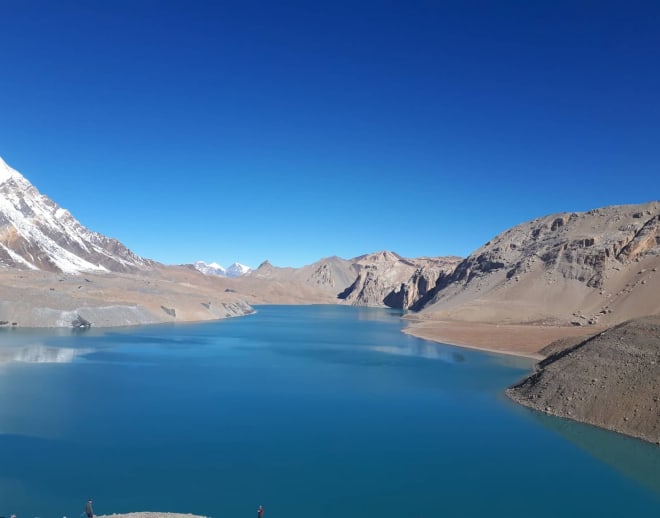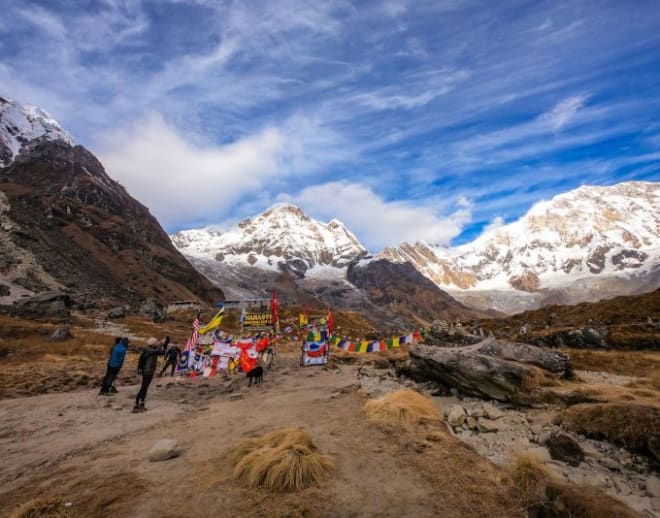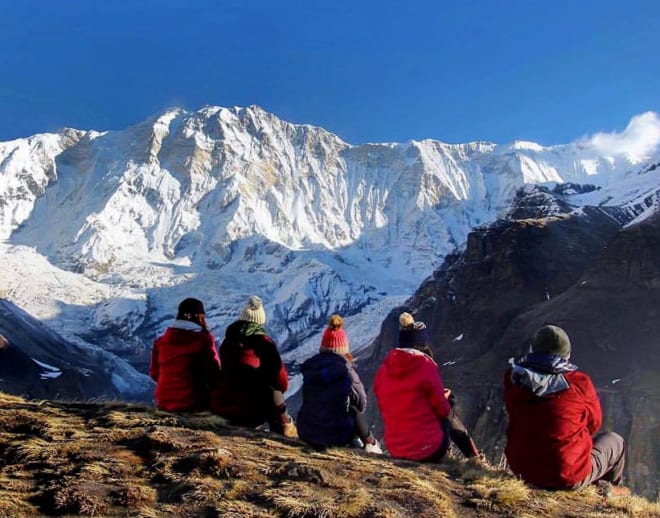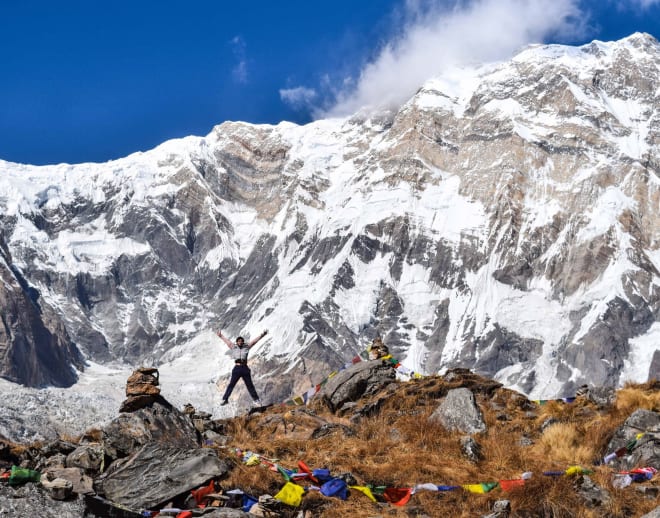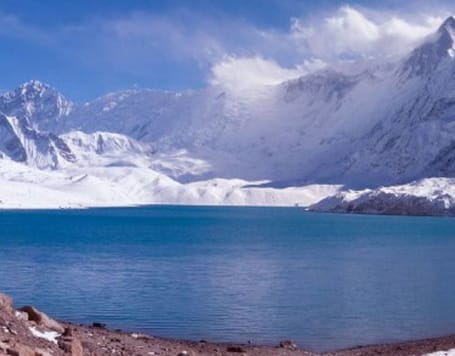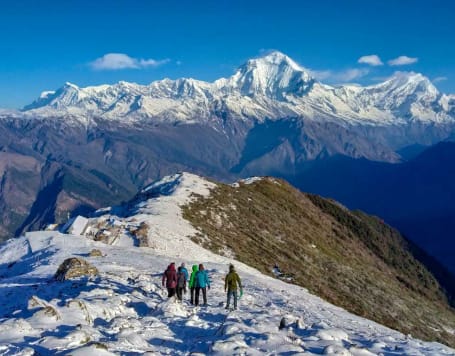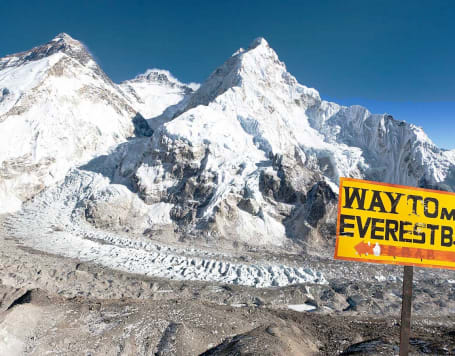The Annapurna Base Camp Trek via Poon Hill is an exciting adventure in the heart of Nepal's stunning Himalayan mountains. This trek takes you on a journey through lush forests, charming villages, and awe-inspiring landscapes. Poon Hill, a famous viewpoint along the route, offers breathtaking sunrise views of snow-capped peaks. As you continue your trek, you'll reach Annapurna Base Camp, surrounded by towering mountains, including the majestic Annapurna Range. This trek is not only a nature lover's paradise but also a chance to experience the warm hospitality of the local people. Get ready for an unforgettable Himalayan adventure!
Quick Facts
➔ Start point: Nayapul
➔ End Point: Nayapul
➔ Trek Level: Easy to Moderate
➔ Total Trail Distance: 110 kilometers
➔ Trek Altitude: 8092m
➔ Duration: 15 days
Inclusion
- Stay: Lodging is included on sharing basis
- Meal: Breakfast, lunch and dinner as per the itinerary
- Guide: Fee for guiding, Mountain guide costs
- Transport: Pokhara to Nayapul and Nayapul to Pokhara transportation by private vehicle. Transportation during the journey
- Permit: Entrance and permit fees
- Porters: Porter service (2 trekkers: 1 porter).
How to reach
By Air
➔ To reach the Annapurna Base Camp Trek via Poon Hill by air, you'll first need to fly into Tribhuvan International Airport in Kathmandu, Nepal's capital.
➔ From Kathmandu, take a domestic flight to Pokhara, the nearest major city to the trek's starting point.
By Road
➔ To reach the Annapurna Base Camp Trek via Poon Hill by road, you can take a bus or hire a private vehicle from Kathmandu to Pokhara, which is the gateway to the trek.
➔ The journey takes approximately 6-8 hours and offers scenic views of Nepal's countryside. From Pokhara, you can arrange local transportation to Nayapul, the trek's starting point.
By Train
➔ Nepal doesn't have a train network, so reaching the Annapurna Base Camp Trek via Poon Hill by train is not possible.
➔ The primary modes of transportation to access this trek are by air or road, as mentioned earlier, involving flights to Kathmandu and then either a domestic flight or a road journey to Pokhara, followed by a road trip to Nayapul.


